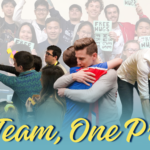Have you ever been in a brainstorming session that felt more like a brain-draining session?
Brainstorming sessions get a bad rap, but the end result of a great brainstorming session is exactly what leaders want: Creative ideas, team bonding, and new energy.
But most people are bad at running brainstorming sessions because no one ever taught them how to do it right. I’ve seen my fair share of brainstorming sessions – the good, the bad, and the unproductive. While brainstorming is a common tool for teams worldwide, did you know that its effectiveness goes beyond just idea generation? Researchers at Northern Illinois University found that brainstorming sessions can significantly enhance team cohesiveness, which is vital for any successful project.
In this post, I’ll share the same six techniques I use to run brainstorming sessions for some of the largest companies in the world, such as Nike, Apple, Pfizer, and the U.S. Navy, to help you experience more of the benefits and less of the negatives.
Tip 1 – Define The Goal
The first step is to actually ‘Define the Goal.’ I know it sounds silly, but too many don’t do this, and it’s crucial to start with a clear understanding of what you’re trying to achieve. This isn’t just about setting a topic; it’s about framing the problem or challenge in a way that directs creative energy toward actionable solutions.
Instead of starting the session by saying, “Today we are going to discuss our growth over the next 12 months,” try instead, “Today, our goal is to come up with five ways we can utilize video to increase traffic to our website over the next 12 months.”
See the difference? Your team’s energy will be much more focused with a clearly defined goal.
In fact, according to a study from the University of California, explicitly defining the problem increases the creativity of solutions. Participants who spent time understanding and framing the problem generated more interesting and viable solutions compared to those who jumped straight into brainstorming without this focus.
So, clearly define your session’s goal, whether it’s generating ideas for a new product, finding solutions to a workplace challenge, or exploring new market strategies. A well-defined goal sets the stage for productive brainstorming. It also narrows down the focus and guides your team’s creative efforts, ensuring the session stays on track and yields relevant, innovative ideas.
Tip 2 – Setting The Tone
If you’re reading this post, I’m going to assume that you are the person in charge of leading brainstorming sessions for your team.
As the leader, your state matters a lot to the overall energy of the group. State is how you show up based on your thoughts, emotions, and physiology. So if you are slouched down in your chair…
And if you are tired, frustrated, and annoyed, don’t expect your team to have more energy than you give to the group. At best, they will match your energy but will very rarely exceed it.
So, you must show up at the level in which you want them to participate.
This mirroring of emotional energy happens because of these tiny little things in our brain called mirror neurons. Mirror neurons match the non-verbal cues of the people around us. If you doubt me, the next time you are in front of a group of people, start nodding your head and watch how many others nod.
Emotional contagion states that the person in a room with the strongest emotional energy, positive or negative, will influence the emotional state of the rest of the people in the room.
As the leader, I like to say you should be the thermostat setting the tone in the room.
One more thing on setting the tone before I move on: as the leader, you have to be careful not to dominate the conversation or speak first or too often because most of the time, the group will follow suit with what you say, especially if you have strong convictions for it. Make sure you give space and time for your group to share their ideas before getting you to start your thoughts and opinions.
Tip 3 – Create Brainstorming Boundaries
Tip number three is a bit ironic because when people think about brainstorming, they think anything goes; it’s a free-for-all with no limits or boundaries. But tip number three is actually to create boundaries for your brainstorm. I know it sounds strange, but by creating boundaries, you will have a more productive and focused session.
Here are some examples of boundaries you might want to include within your brainstorm:
- Limit how much money can be spent.
- Limit the timeframe for completion.
- Limit the physical local boundaries to require that everything has to be done virtually.
- Limit the tools that can be used.
- If it’s related to writing, limit the number of characters or words that can be used.
- Create an artificial ending or beginning by saying, “It has to end with…” or “It has to begin with…”
Hopefully, you get the idea of ways you can set boundaries for your group.
Tip 4 – Get Physical
No, I don’t mean the song or to let your team fight it out. This isn’t about creating the next MMA battle, but it is about physical movement.
Trying to be creative while sitting down is like trying to cook a gourmet meal using only a microwave – it’s possible but not ideal.
Get your team up and moving for the brainstorm.
Stanford researchers found that walking boosts creative inspiration, increasing a person’s creative output by an average of 60 percent compared to sitting. This was found to be true whether walking indoors or outdoors. The act of walking itself, not the environment, boosted creativity. Participants produced twice as many creative responses when walking compared to sitting. Even more interestingly, the creative juices kept flowing even after they sat back down shortly after a walk.
One idea is to set up flip chart paper around the room and have them move from section to section, answering a different question on each paper. Sure, they could do the same thing while sitting down, but the creativity will flow much more if they are up and moving.
Another option is to use Post-it notes and section off a table with different themes for each section. Have participants write down ideas on the Post-it notes and stick them to the corresponding section of the table. This will get them up and moving around.
The goal here is to do something other than just sit around a table and verbally talk.
Tip 5 – The Dangers of Groupthink and Extrovert Hijack
To set up Tip 5, let me ask you a question: if I have 20 people in a room and I pose an idea to the whole group and ask for feedback, who do you think we would hear from the fastest and most often?
- Introverts? Nope
- Soft-spoken people? Nope
- Deep thinkers? Nope
- Processors? Nope
We’d hear from the extroverts! They would be the first to pop their hand up and share their thoughts. Extroverts are known to think out loud. In contrast, introverts are known to process the idea internally first and then share it with others.
As a leader, you want to make sure you hear from everyone. The more diverse the input of ideas, the better. So, how do you give introverts and ambiverts a chance to share and not let extroverts dominate the conversation?
The answer is Solo – Small – Large.
Here’s how it works.
After you give the group a brainstorming prompt, first have them write down some ideas by themselves, alone, on a piece of paper, without any verbal communication. Then, create small groups of 2-4 people and have them share their ideas and develop new ideas in these small groups. Lastly, open it up to a large group for sharing.
Here are the benefits of Solo – Small – Large:
- Introverts have a chance to process and come up with ideas.
- The small group conversation will give introverts and ambiverts a chance to practice sharing, making them more comfortable sharing with the whole group.
- Extroverts will have to take some time to think through their idea before sharing in large groups, which will create more clarity.
- It will avoid groupthink, which occurs when everyone agrees with the first person who speaks, and there is very little diversity in shared ideas.
In fact, the American Psychological Association found that groups affected by groupthink make poorer decisions at least 30% of the time compared to individuals or non-groupthink groups.
Oh, by the way, you, as the group leader, are the most likely to create groupthink because your thoughts and ideas sway the group the most, leading to the dangers of groupthink. A simple solution to this is, as a leader, like I said before, don’t share first. Ensure you hear from everyone else on the team first and then share your ideas.
Follow these steps in tip number 5, and you’ll be well on your way to avoiding groupthink and getting a diverse set of ideas from everyone in the group.
Tip 6 – Unrelated Connections
This is where the magic of brainstorming really happens. It’s about connecting seemingly unrelated ideas to spark true innovation. I know it sounds a bit foo-foo, but this concept is rooted in the notion that creative breakthroughs often occur when different ideas collide.
A study published in Management Science’ found that the most impactful innovations often result from bridging ideas from different domains. It’s about looking beyond the obvious connections and finding novel ways to combine diverse concepts.
So, how do you apply this in your brainstorming session?
One option I’ve done is to put a bunch of nature pictures on the table and then ask everyone to take one. Then, I asked each person to devise a way to integrate the nature picture they chose into the topic of our brainstorming. I know it sounds odd, but it’s amazing how sometimes the best ideas don’t come straight on but rather through a side door.
Another activity is to have a series of breakthrough ideas from other companies in other industries, then challenge each person to pick one breakthrough and try to integrate it into your line of work.
“Got Milk?” How could we use something like this in our industry?
The goal is to create a melting pot of ideas where the most unlikely combinations can lead to groundbreaking solutions. Step out of the conventional thinking patterns and explore new territories.
This approach not only breeds innovation but also adds an element of fun and surprise to the session. By guiding your team through this process, you’re not just brainstorming; you’re sculpting a culture of innovation and open-mindedness.
And there it is! That’s a wrap on six ways to bring some spark to your next brainstorming session.
Recap of the 6 Tips:
- Define the Goal – is about setting the stage for where we want our idea train to go.
- Setting the Tone – is a reminder that you’re the conductor, ensuring the energy in the room is just right.
- Creating Boundaries – is about building a sandbox where creative minds can build castles.
- Getting Physical – is about stirring up creativity with a bit of shimmy and shake.
- Avoiding Groupthink and Extrovert Hijack – is about getting every voice heard, not just the loudest.
- Unrelated Connections – is about connecting old ideas together to create a magical new idea.
Remember, running an effective brainstorming session is like orchestrating a symphony of thoughts. Each tip is a note that contributes to a harmonious melody of ideas. So next time you gather your team, think of yourself as a maestro, waving the baton to create a masterpiece of ideas. Who knows, your next session might just be the one where a spark of genius ignites!




